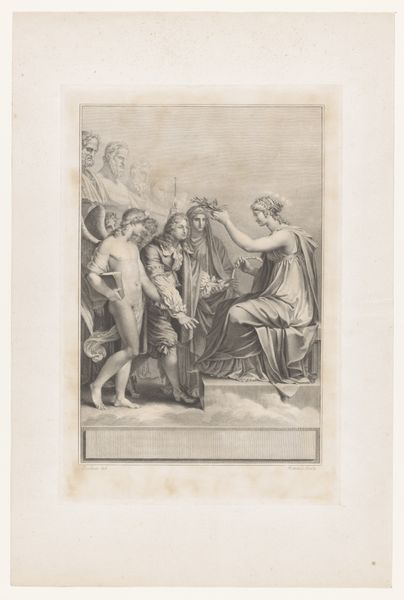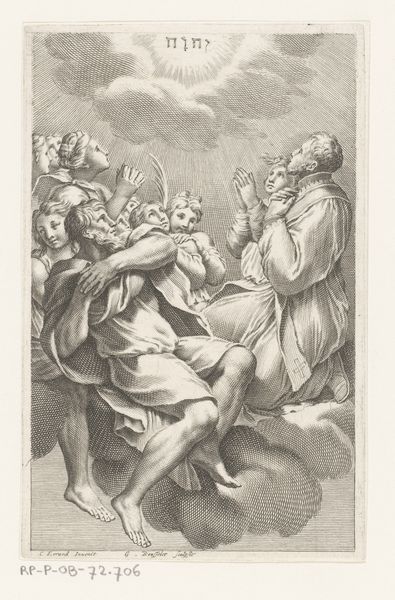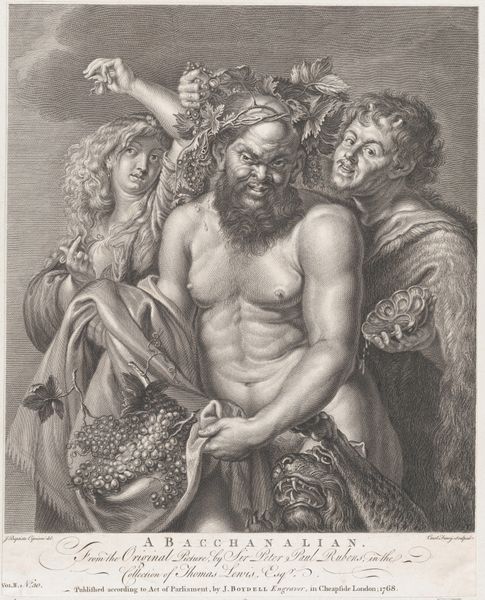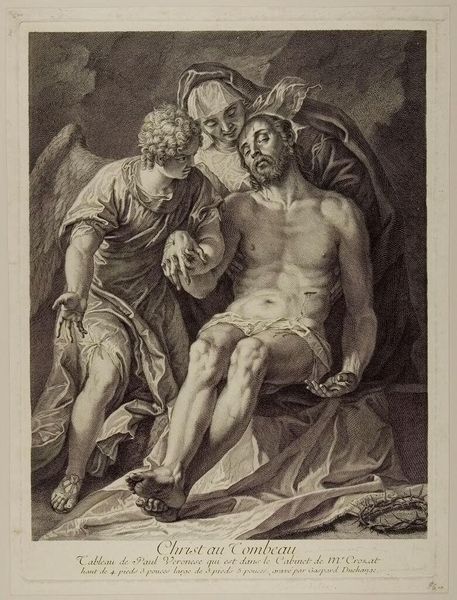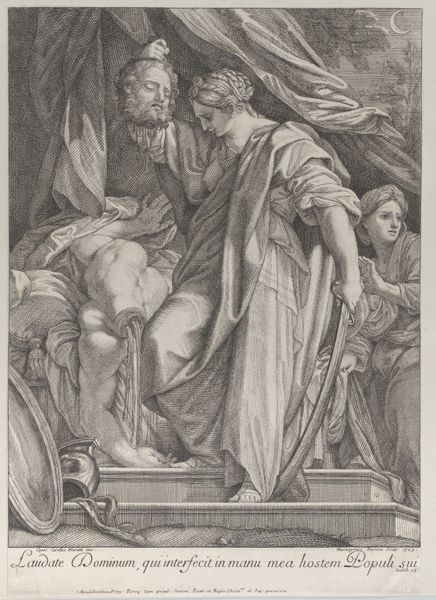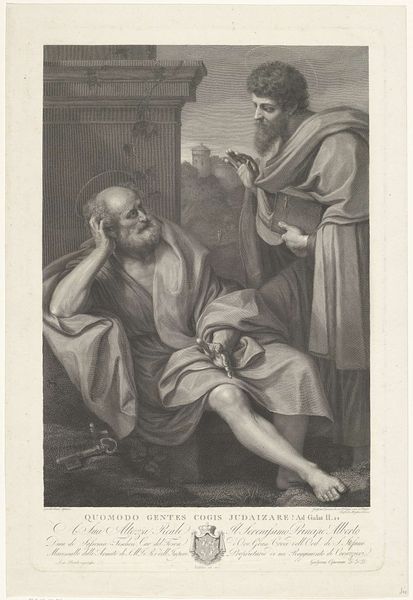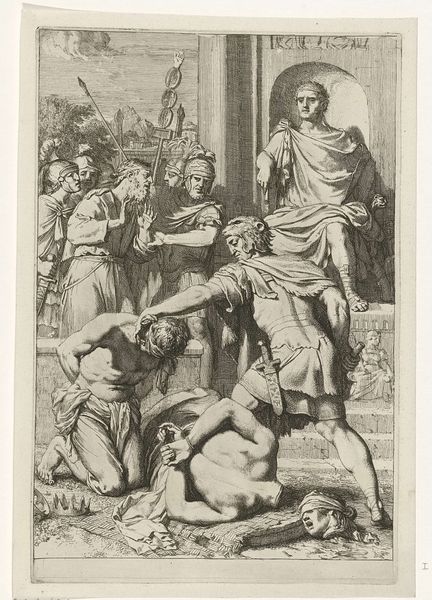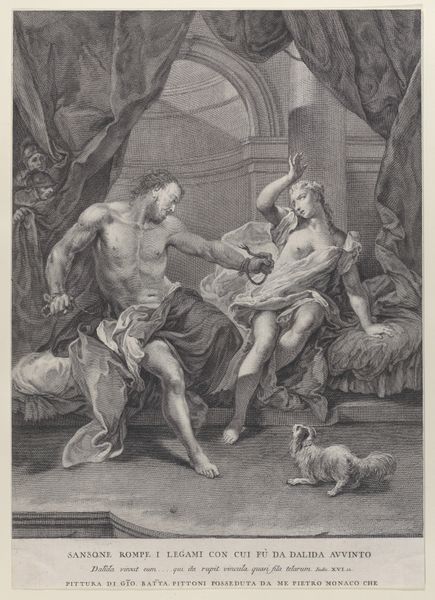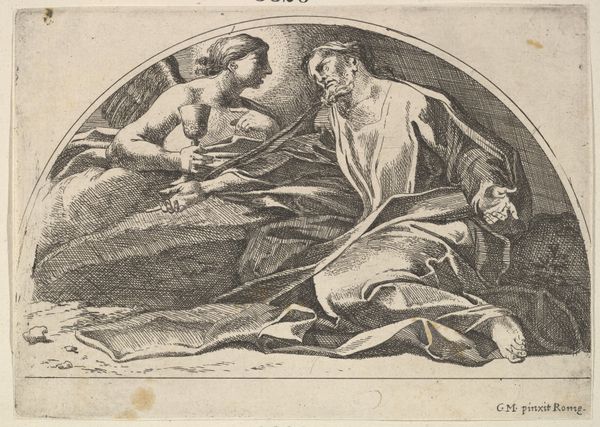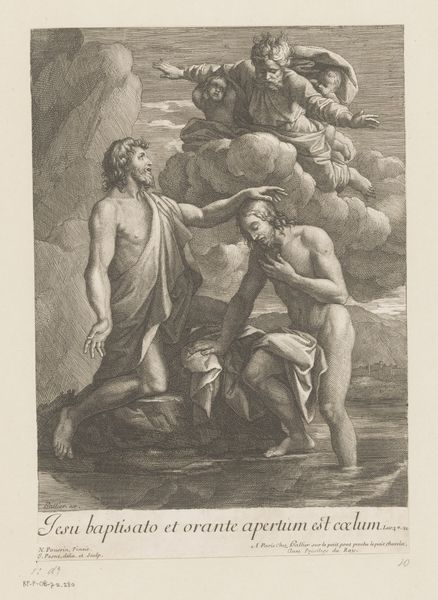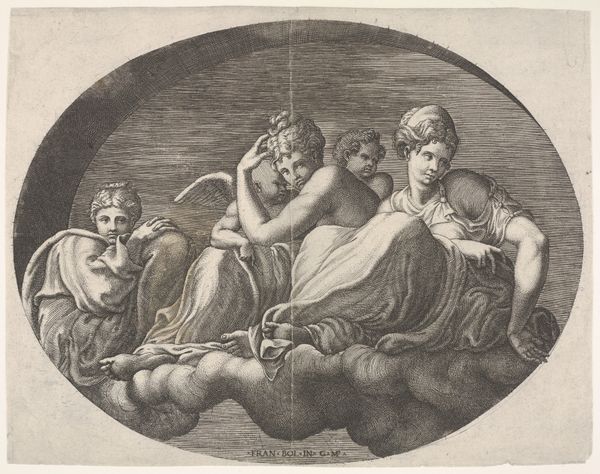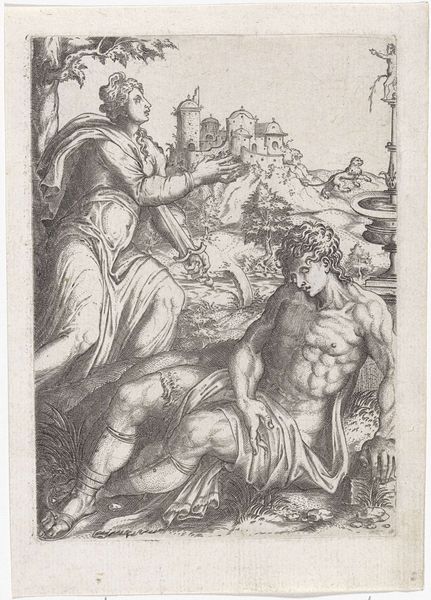
Dimensions: height 232 mm, width 160 mm
Copyright: Rijks Museum: Open Domain
Curator: Here we have "Ecce Homo," a print created by Christiaan Lodewijk van Kesteren, likely sometime between 1842 and 1897. It is currently held here at the Rijksmuseum. Editor: Woah, that is intense. Right off the bat, it's the gazes—the contrast of resignation and sheer animosity radiating from the figures... heavy stuff. You almost feel trapped by them in this intimate circle. Curator: Indeed, the artist renders this well-known biblical scene in a way that prompts us to consider the social dynamics at play here. Christ presented to the crowd...the judgement rendered. Editor: And technically speaking, you gotta hand it to van Kesteren—the stark contrast achieved in engraving is powerfully effective. Like a chiaroscuro, highlighting every lash mark, every contemptuous glare. It pulls the suffering into sharp focus. Curator: The print medium also plays a key role in the broader social life of images. Prints such as these enabled widespread circulation and thus had immense reach. We should remember how such imagery shapes social attitudes. Editor: Exactly! It's interesting to reflect on the impact this depiction would've had on those who viewed it back then and how such familiar imagery might still hold sway over collective consciousness today. It almost transcends the purely religious. Curator: Well put. By presenting Christ as a figure surrounded by hate and condemnation, this print serves as a potent symbol of power and persecution and reminds us of the ways images are mobilized to cement narratives. Editor: Looking at this has given me so much to consider. The print medium... the message... It’s wild how art from so long ago can make the hairs on your arms stand up straight! Curator: It serves as a powerful reminder of the enduring ability of art to evoke profound emotional responses, regardless of temporal distance.
Comments
No comments
Be the first to comment and join the conversation on the ultimate creative platform.
